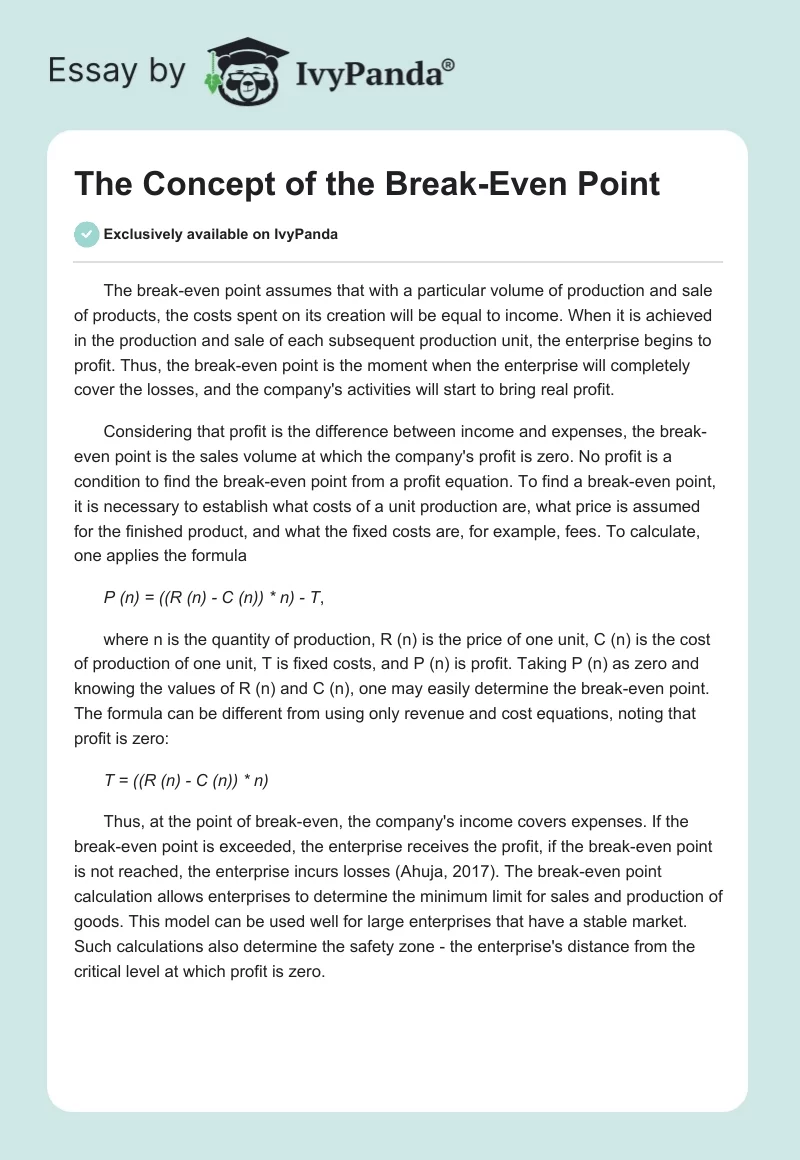The break-even point assumes that with a particular volume of production and sale of products, the costs spent on its creation will be equal to income. When it is achieved in the production and sale of each subsequent production unit, the enterprise begins to profit. Thus, the break-even point is the moment when the enterprise will completely cover the losses, and the company’s activities will start to bring real profit.
Considering that profit is the difference between income and expenses, the break-even point is the sales volume at which the company’s profit is zero. No profit is a condition to find the break-even point from a profit equation. To find a break-even point, it is necessary to establish what costs of a unit production are, what price is assumed for the finished product, and what the fixed costs are, for example, fees. To calculate, one applies the formula
P (n) = ((R (n) – C (n)) * n) – T,
where n is the quantity of production, R (n) is the price of one unit, C (n) is the cost of production of one unit, T is fixed costs, and P (n) is profit. Taking P (n) as zero and knowing the values of R (n) and C (n), one may easily determine the break-even point. The formula can be different from using only revenue and cost equations, noting that profit is zero:
T = ((R (n) – C (n)) * n)
Thus, at the point of break-even, the company’s income covers expenses. If the break-even point is exceeded, the enterprise receives the profit, if the break-even point is not reached, the enterprise incurs losses (Ahuja, 2017). The break-even point calculation allows enterprises to determine the minimum limit for sales and production of goods. This model can be used well for large enterprises that have a stable market. Such calculations also determine the safety zone – the enterprise’s distance from the critical level at which profit is zero.
Reference
Ahuja, A. (2017). Managerial economics (Analysis of managerial decision making) (9th ed.). S CHAND & Company Limited.


